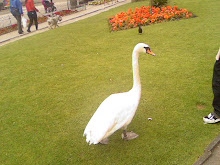
The above picture is from an old calendar page that has been in my cupboard for the last six years.
The picture shows thick mud houses located somewhere in one of the deserts of Pakistan. Even in its two dimensional form, the cruel heat of a Pakistani summer is quite evident.
I have been told that the mud houses shown in the picture are quite effective in protecting against the scorching heat of the sun.
It is a fine picture, no doubt, quite appropriate for the month it represents
However that is not why I hold on to it.
I hold on to it because there is a date on this page that divides my life into two distinct parts.
A “life before” portion and a “life afterwards” one.
The date that divides it is June 11 2003.
It is the date Naveed passed away.
It is said that of all the misfortunes that one could encounter in a life time, the worst and the last one happens to be death itself.
But I tend to disagree.
I think loosing someone you love surpasses that.
How can death itself be bad?
You can only categorize something as good or bad if you think about how it has affected you. Though admittedly, death does have a far more drastic effect than any other calamity that could befall one during life, but then again, one is hardly able to compare it with anything or think about it in any way afterwards since all thought process stops with death; at least I think it does, though I can’t be sure. I have never been dead you see.
We all have our different ways of looking at death, of trying to understand something we have not been given the power to understand. Trying to figure out what it means.
And we all come up with different meanings. We all form our own beliefs about a phenomenon which is beyond our comprehension. And it is these beliefs of ours that then act like little mud huts insulating and protecting us from the intensity of tragedy that threatens to destroy our sanity.
It was about a year after Naveed’s death that I came across something which I have taken to believe is the meaning of death.
I came across it quite accidentally in news paper along side the picture of the absurdly handsome young man. Laughing and full of life when the picture was taken, deceased and gone forever by the time it was published. Infect the picture was published because he was dead. It was part of the obituary of a youth who had died before reaching his 23rd birthday.
I copied the words from his obituary (added there by grieving parents as a tribute to the memory of their lost son) and posted them to all my acquaintances on Naveed’s first Barsi. At that time I did not know that those words were actually a poem by Henry Van Dyke.
Though six years have passed since I first read them, the significance and poignancy of the words still remains strong.
So here they are one more time.
A Parable of Immortality
By Henry Van Dyke
I am standing by the sea shore.
A ship at my side spreads her white sails to the morning breeze and starts for the blue ocean.
She is an object of beauty and strength, and I stand and watch until at last she hangs like a peck of white cloud just where the sun and sky come down to mingle with each other.
Then someone at my side says:
‘There she goes!’
Gone where?
Gone from my sight –that is all
She is just as large in mast and hull and spar as she was when she left my side and just as able to bear her load of living freight to the places of destination.
Her diminished size is in me not in her.
And just at the moment when someone at my side says:
‘There she goes!’
There are other eyes watching her coming and other voices ready to take up the glad shout:
Here she comes‘!’
And that is death
It has to be
Because death in any other form is un-survivable








No comments:
Post a Comment